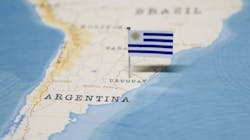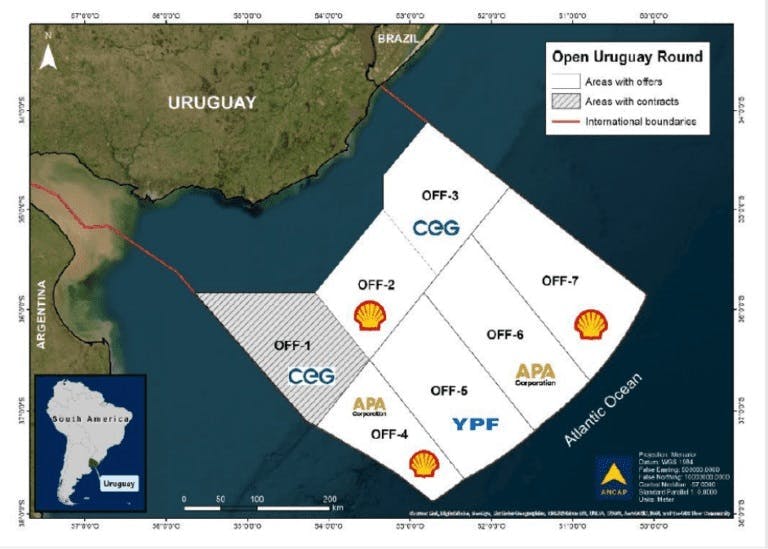Chevron agrees to operate offshore Uruguay exploration license
Offshore staff
DOUGLAS, UK — Chevron has entered an agreement with Challenger Energy to assume a 60% operated interest in Uruguay’s AREA OFF-1 offshore exploration block.
Challenger will retain a 40% stake, with Chevron set to carry the company for its full share of costs associated with a 3D seismic campaign, up to a maximum of $15 million.
Thereafter, if Chevron opts to drill an initial exploration well, it will cover 50% of Challenger’s share of the drilling costs, up to $20 million.
Completion is subject to approvals from the Uruguayan regulatory authorities, and these will likely take months to finalize.
Challenger CEO Eytan Uliel said, “We firmly believe that AREA OFF-1 holds enormous potential…Our stated strategy…was to introduce a larger industry player as operating partner, with a view to rapidly progressing the block via an accelerated 3D seismic campaign followed by, we hope, exploration well drilling.”
The concession covers a 14,557-sq-km area, 100 km offshore in water depths varying from 80-1,000 m. Challenger secured the license in June 2020 under the Open Uruguay Round process, with the initial four-year exploration term starting on Aug. 25, 2022.
Recent conjugate margin discoveries offshore southwest Africa attracted the majors to the other available offshore blocks, in the belief that the regional petroleum system charging those finds could extend to offshore Uruguay.
Untested exploration plays, in addition to the Lower Cretaceous deepwater turbidites discovered in Venus, Graff and others offshore Namibia, are thought to be present and charged by the same petroleum system and source rock.
The minimum work commitment in the initial exploration period of AREA OFF-1 was the licensing of 2,000 km of legacy 2D seismic data from ANCAP, reprocessing of the data, and completion of a geological and resource potential study.
Challenger has already fulfilled its requirement and has also performed amplitude variation with offset (AVO) attribute analysis of selected reprocessed 2D lines, along with seabed geochemistry analysis and satellite seeps and a slicks imaging study.
This work has led to the identification of three main prospects on the license with combined recoverable resources estimated at ~2 Bboe.
03.08.2024




